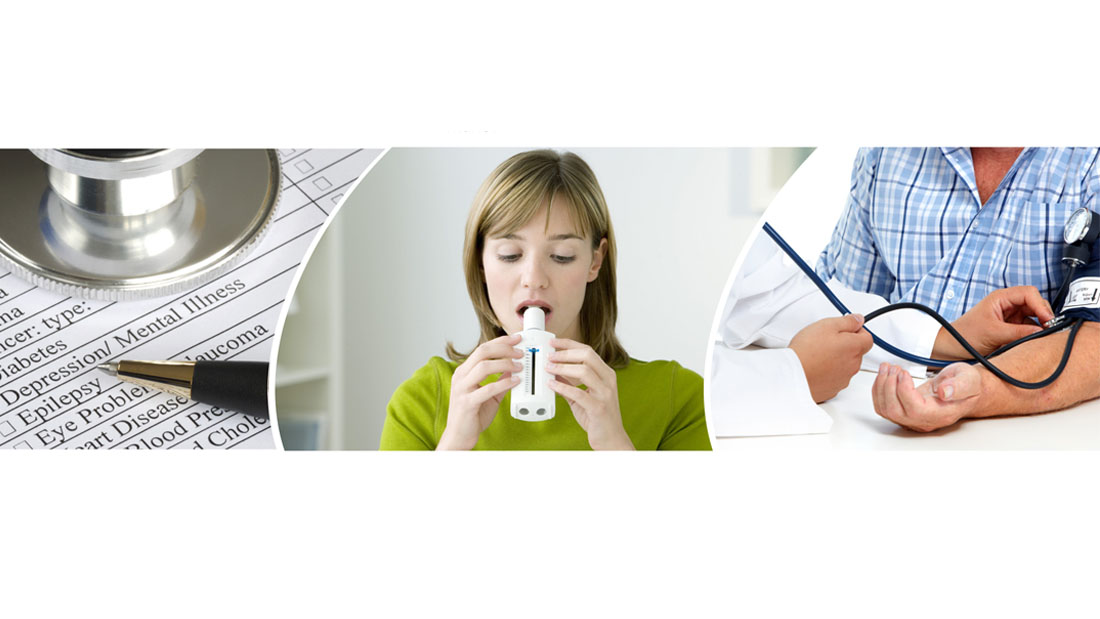
What is health surveillance?
Health surveillance is a programme of systematic and regular health checks that enable early identification of work-related ill health and allows corrective action to be taken when needed. The health checks may be required by law for employees who are exposed to certain elements at work that can harm their health. These can include:
- Noise
- Vibration
- Ionising radiation
- Asbestos
- Lead
- Solvents
- Fumes
- Dusts
- Biological agents
- Compressed air
- Any other substances hazardous to health
Health surveillance is also important for:
- Providing data to help employers evaluate health risks
- Enabling employees to raise concerns about how work affects their health
- Highlighting lapses in workplace control measures, therefore providing invaluable feedback to the risk assessment
- Providing an opportunity to reinforce training and education of employees (e.g. on the impact of health effects and the use of protective equipment)
When Is it required?
A risk assessment should be used in the first instance to identify if there is any need for health surveillance. You should not use health surveillance as a substitute for undertaking a risk assessment or using effective controls to eliminate or manage the risk.
Your risk assessment should identify what the hazards are in your workplace, identify the employees who are at risk and decide what can be done to control these risks. The main aim, if possible, is to get rid of the risk altogether. In many cases, this cannot be done so the aim should then be to reduce the risk or aim to control it to a level that will not be harmful to health. This will not always be possible, so in these instances, further steps will be required such as providing PPE and introducing health surveillance. Control measures may not always be reliable, despite regular checking and maintenance, so health surveillance can help make sure that any ill health effects are detected as early as possible.
Do you need health surveillance in your workplace?
If the answer to the following questions is ‘Yes’, then health surveillance is required:
- Is the work known to damage health?
- Are there valid ways to detect a disease or condition?
- Is it reasonably likely that damage to health may occur under the particular conditions at work?
- Is surveillance likely to benefit the employee?
Other reasons to consider health surveillance in the workplace
- If previous cases of work-related ill health have occurred in the same workplace
- Where PPE is relied upon- Even with strict supervision, there is no guarantee that PPE will always be effective and used correctly by employees
- Where there is evidence of work-related ill health in other jobs found within your industry or workplace
When is health surveillance not required?
If you are sure there is no exposure or where exposure that does take place is extremely rare, short and there is only very minimal risk the employee, then it may be not required. In saying this however, there are some substances that can cause very serious illness such as cancers and for these, any level of exposure no matter how small may be deemed unsafe.
Different types of health surveillance
In its simplest form, health surveillance can involve employees checking themselves for signs or symptoms of ill health once adequate training has been provided to educate them on what to look for and who to report symptoms to. For example, this could be an employee reporting soreness, redness or itching on their skin where they work with substances known to irritate or damage the skin.
In cases like this, a responsible person could be trained in the workplace to make routine employee checks or issue periodic questionnaires to monitor symptoms. This could be a supervisor, employee representative or first aider.
For more complex assessments, an occupational nurse or occupational doctor will be required to carry out periodic medical examinations. These could include a hearing test for workers in very loud environments or a lung function test for workers who regularly use certain paints.
How long is health surveillance required?
Once you have decided to introduce health surveillance, continue it for as long as the employee is exposed to the risk. The frequency of checks or examinations should be increased in cases where it is not certain whether exposure might be causing harm.
When it is clear the risk has declined to a very low level, the frequency of health surveillance can be reduced, or in some cases stopped altogether. Always speak with an occupational health professional for advice on when to discontinue health surveillance.
Some regulations also require employers to continue surveillance of employees after the risk to exposure has stopped, to detect any long-term disease at an early stage. For example, those governing certain chemicals, lead or work in compressed air may require surveillance to be continued to detect early stages of cancer.
From time to time, we find that managers and supervisors confuse health surveillance with fitness to work examinations and even workplace wellbeing checks. If you are unsure whether health surveillance is a legal requirement in your workplace, get in touch with us now.
